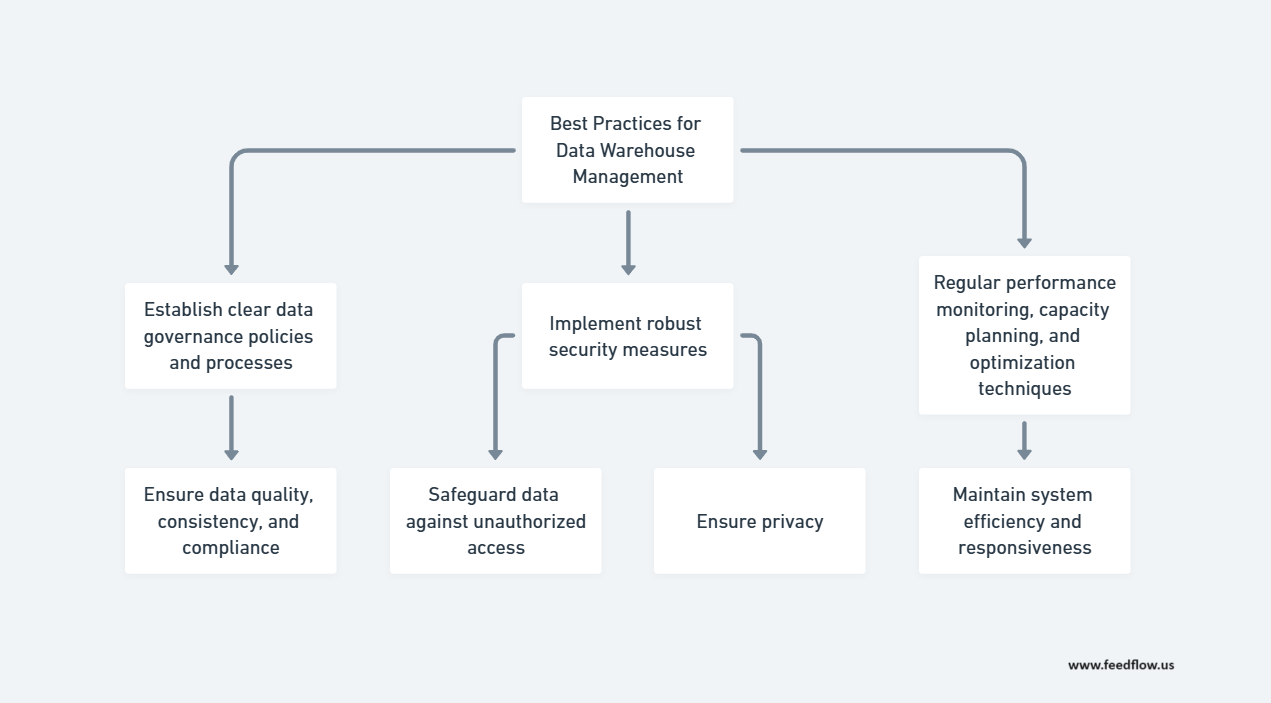Table of Contents
Introduction to Data Warehousing

Data warehousing plays a pivotal role in supporting business intelligence initiatives. It involves the centralized storage and efficient management of data to enable organizations to make informed decisions based on accurate and timely information. In this article, we will explore the fundamental concepts, design principles, optimization strategies, and real-world case studies of successful data warehouse implementations.
Role of Data Warehousing in BI Architecture
Data warehousing serves as the backbone of BI architecture, providing a comprehensive, integrated, and centralized platform for data storage. It enables efficient data access, consolidates heterogeneous data sources, and empowers organizations to perform complex analytics, reporting, and data mining activities. By integrating data from various business units, departments, and systems, data warehousing enables organizations to gain valuable insights and make informed decisions.
Understanding Data Warehouse Design Principles
Data warehouse design principles are critical for creating an effective and scalable data warehousing solution. Dimensional modeling, star schemas, and snowflake schemas are fundamental concepts that facilitate efficient querying and analysis. Dimensional modeling techniques leverage the concept of facts and dimensions to organize data hierarchically and provide a multidimensional view of the data, enabling faster and more intuitive analysis.
Dimensional Modeling Techniques
Dimensional modeling techniques such as star schemas and snowflake schemas are widely used in data warehousing. Star schemas simplify data retrieval by organizing data around a central fact table linked to dimension tables. Snowflake schemas, on the other hand, normalize the dimension tables to reduce redundancy. The choice of dimensional modeling technique depends on the specific needs of the organization and the underlying data structure.
Optimizing ETL Processes
Extract, Transform, Load (ETL) processes are a critical component of data warehousing. Optimizing ETL processes ensures the efficient and accurate movement of data from source systems to the data warehouse. Strategies such as parallel processing, data partitioning, and incremental data extraction can significantly improve ETL performance. Additionally, thorough data profiling, cleansing, and quality checks are essential to ensure the integrity and reliability of the data.
Efficient Data Extraction Strategies
Efficient data extraction from disparate sources is essential for successful data warehousing. Techniques such as change data capture, data replication, and query-based extraction can expedite the extraction process. Leveraging data integration tools and technologies, organizations can establish seamless connections with various data sources, extract relevant data efficiently, and transform it into a common format for further analysis.
Transforming Data for Analysis

Effective data transformation is crucial to convert raw data into structured formats suitable for analysis within the data warehouse. Data transformation processes involve cleaning, filtering, aggregating, and enriching the data to ensure its quality and consistency. Advanced data transformation techniques, like data deduplication and data consolidation, help organizations generate meaningful insights and enable accurate decision-making.
Loading Data into the Warehouse
Loading transformed data into the data warehouse requires careful consideration of performance, security, and data integrity. Strategies such as bulk loading, partitioning, and indexing can improve loading efficiency. Additionally, data warehouse administrators should implement appropriate security measures, access controls, and backup mechanisms to protect the integrity and confidentiality of the data during the loading process.
Real-world Case Studies
Real-world case studies provide invaluable insights into successful data warehouse implementations across different industries. Examining these cases helps organizations understand the practical applications of data warehousing and the potential benefits they can expect to achieve. Let’s explore a few noteworthy examples from the retail, finance, healthcare, and manufacturing sectors.
Retail Industry Case Study
One retail organization leveraged data warehousing to enhance decision-making and customer insights. By consolidating data from multiple sources, including point of sale systems, customer relationship management systems, and online sales platforms, the company gained a comprehensive view of customer behavior, preferences, and trends. This enabled them to optimize pricing, inventory management, and marketing strategies, resulting in increased customer satisfaction and revenue growth.
Finance Industry Case Study
In the finance industry, data warehousing plays a vital role in risk management and regulatory compliance. A financial institution utilized data warehousing to consolidate data from various systems, including transactional data, market data, and customer data. This consolidation enabled comprehensive risk analysis, fraud detection, and compliance reporting. The organization was able to respond quickly to market changes, make data-driven decisions, and fulfill regulatory requirements efficiently.
Healthcare Industry Case Study
Healthcare organizations benefit from data warehousing through patient analytics and operational efficiency. One healthcare provider utilized data warehousing to integrate data from electronic health records, billing systems, and medical devices. This comprehensive view of patient data enabled improved clinical decision support, streamlined billing processes, and efficient resource allocation. The organization could identify trends, predict patient outcomes, and ensure higher-quality care delivery.
Manufacturing Industry Case Study
In manufacturing, data warehousing helps optimize supply chain management and predictive maintenance. A manufacturing company implemented data warehousing to consolidate data from production systems, machine sensors, and maintenance logs. By analyzing this integrated data, the organization could identify bottlenecks, optimize production schedules, and predict maintenance needs. This resulted in reduced downtime, enhanced operational efficiency, and cost savings.
Success Factors and Lessons Learned
Extracting success factors and lessons learned from real-world case studies can provide valuable insights for organizations considering data warehouse implementations. Key factors that contribute to successful data warehouse projects include executive sponsorship, clear business objectives, effective collaboration between IT and business teams, and continuous monitoring and optimization of the data environment.
Challenges and Considerations
Data warehousing projects face numerous challenges and considerations. Issues related to data quality, data integration, scalability, performance, and governance need careful attention. Organizations must address these challenges by implementing robust data quality controls, establishing scalable architectures, leveraging performance tuning techniques, and implementing effective data governance frameworks to ensure the accuracy, availability, and security of data.
Future Trends in Data Warehousing
The future of data warehousing is shaped by emerging trends and technologies. Cloud-based solutions, data lakes, and real-time analytics are transforming the data warehousing landscape. Organizations are increasingly adopting cloud-based data warehousing solutions, leveraging the scalability, flexibility, and cost-effectiveness they offer. Data lakes allow organizations to store and analyze massive volumes of raw data, enabling advanced analytics and machine learning. Real-time analytics enables prompt decision-making by providing up-to-date insights from streaming data.
Best Practices for Data Warehouse Management

Effectively managing data warehouses requires adopting best practices for data governance, security, and performance monitoring. Establishing clear data governance policies and processes ensures data quality, consistency, and compliance. Implementing robust security measures safeguards data against unauthorized access and ensures privacy. Regular performance monitoring, capacity planning, and optimization techniques help maintain system efficiency and responsiveness.
KNOW the difference between Data Base • Data Warehouse • Data Lake (Easy Explanation👌)
Confusing your data lakes with actual lakes? Not sure how much land you need for the data warehouse? You have come to the right place my friend.
In this concept buster video, let me explain what Data base, data warehouse and data lake are and how they connect / differ?⏱In this video 👉
0:00 – Intro & Databases
1:38 – Data warehouse
2:28 – Why can’t we use DB for reporting?
3:09 – ETL, how data goes from DB to DWH
4:05 – What is a Data Lake?
5:46 – Examples of DB, DWH & DL
6:43 – How to access data in DB, DWH & DL?
Conclusion
Data warehousing plays a crucial role in unlocking the power of centralized data storage for business intelligence. By leveraging data warehousing, organizations can consolidate their data, gain valuable insights, make informed decisions, and gain a competitive advantage. Understanding the principles, design techniques, optimization strategies, and real-world case studies of successful implementations provide a solid foundation for organizations embarking on their data warehousing journey.


